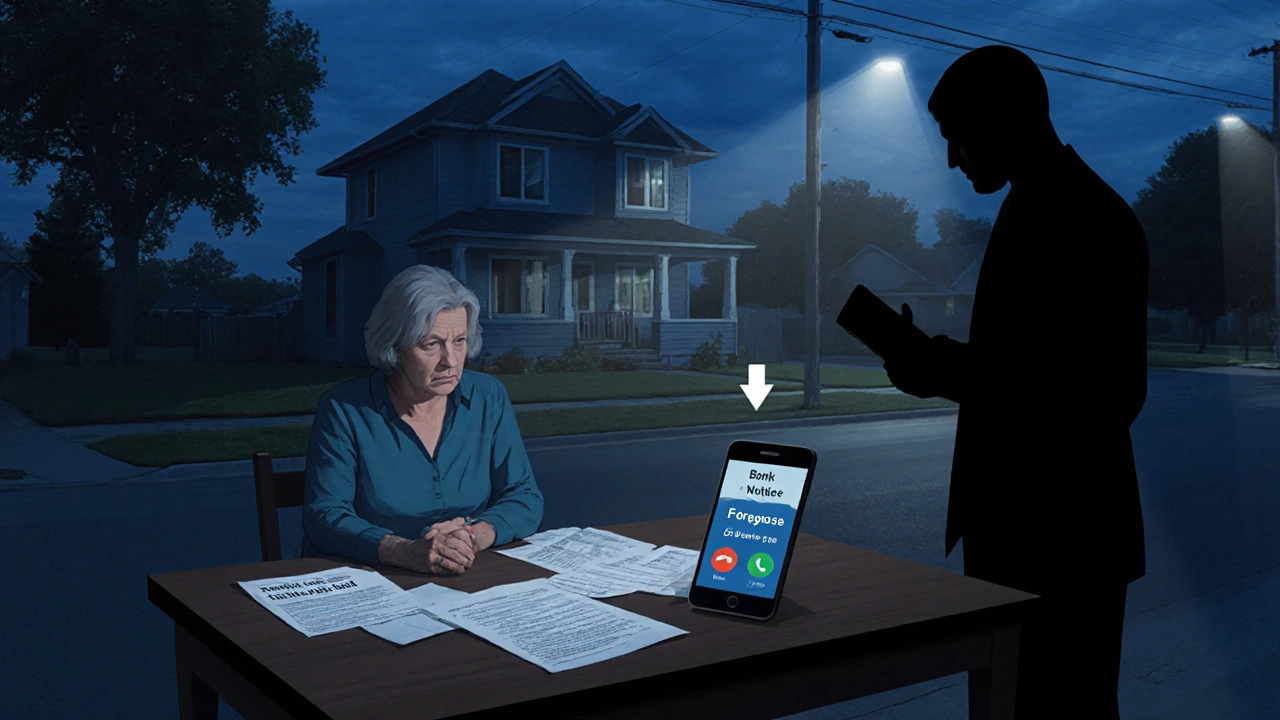Joint Ownership Financial Risk Calculator
Joint ownership creates joint and several liability for the entire mortgage. This calculator shows the potential financial impact if one co-owner defaults on the mortgage payment.
When two or more people buy a property together, joint ownership is a form of co‑ownership where each owner holds an undivided share of the whole property. It sounds like a simple way to split costs, but the reality can be messy. Below we break down the biggest drawbacks, show how they differ from other ownership styles, and give practical steps to protect yourself.
Quick Takeaways
- Joint owners are each liable for the entire mortgage, not just their share.
- Without a clear agreement, disputes over use, improvements, or sale can stall the property.
- Survivorship rules in a joint tenancy can force unwanted inheritance outcomes.
- Exit strategies are limited - you often need a legal partition or the consent of all owners.
- Having a written co‑ownership agreement can mitigate most risks.
How Joint Ownership Works
In a joint tenancy arrangement, each owner holds an equal #interest# and the right of survivorship applies - if one owner dies, their share automatically passes to the surviving owners, bypassing wills. This differs from tenancy in common, where each owner can own different percentages and can will their share to anyone.
Because the law treats the property as a single entity, all owners are jointly and severally liable for the mortgage and taxes. If one partner misses a payment, the lender can pursue the others for the full amount.
Key Disadvantages of Joint Ownership
- Unlimited Financial Liability: Even if you own 25% of the home, you’re on the hook for 100% of the loan. A default by a co‑owner can damage your credit and even lead to foreclosure.
- Loss of Control Over Sale Decisions: Most lenders and title offices require consent from all owners before a sale can close. A single dissenting partner can stall or block the transaction.
- Inheritance Complications: In a joint tenancy, the right of survivorship overrides any testamentary wishes. If an owner wants their share to go to a child, it won’t happen unless the joint tenancy is converted first.
- Difficulty Obtaining Refinances: Lenders evaluate the creditworthiness of every owner. One weak credit score can prevent the group from refinancing, even if the others qualify.
- Potential for Partition Actions: When owners can’t agree, a court may order a partition - physically dividing the land (rare) or selling the property and splitting proceeds. This process is costly and time‑consuming.

Comparing Joint Tenancy and Tenancy in Common
| Aspect | Joint Tenancy | Tenancy in Common |
|---|---|---|
| Ownership Share | Typically equal shares; can be unequal only if documented | Any percentage each owner chooses |
| Right of Survivorship | Yes - share passes automatically to survivors | No - share passes according to will or intestacy |
| Transfer Without Consent | Generally requires all owners' consent | Each owner can sell or mortgage their portion independently |
| Liability for Debt | All owners liable for entire mortgage | Same - joint and several liability applies |
| Estate Planning Flexibility | Limited - survivorship overrides wills | High - can be bequeathed freely |
Notice how the survivorship rule is the biggest source of risk for joint tenancy. If you don’t want your share to go automatically to co‑owners, tenancy in common is usually safer.
Legal and Financial Safeguards
Before signing any deed, put a written co‑ownership agreement in place. This document can address:
- How monthly expenses (mortgage, rates, insurance) are divided.
- Procedures for selling, renting, or making major improvements.
- What happens if an owner wants out - e.g., first right of purchase, buy‑out formula.
- Dispute‑resolution mechanisms, such as mediation before litigation.
In New Zealand, the Property Law Act 2007 governs co‑ownership. It allows the parties to create a “partition” clause, which can streamline a forced sale if relationships break down.
From a financial perspective, keep a separate escrow account for shared expenses. This makes it easier to prove you’ve paid your fair share if a dispute reaches a court.
Real‑World Example: The Smith Siblings
Three siblings bought a holiday home in Rotorua as joint tenants. Two years later, the eldest sister lost her job and fell behind on her mortgage portion. The bank threatened foreclosure on the entire property. Because the ownership was joint, the other two siblings were forced to cover the shortfall, draining their savings. They later had to sell the house at a loss to avoid legal action. If they had chosen tenancy in common and a written agreement, the bank could have pursued only the sister’s share, sparing the others.
When Joint Ownership Might Still Make Sense
Despite the downsides, there are scenarios where joint ownership shines:
- Close family members who trust each other completely and have aligned long‑term goals.
- Investors pooling resources for a short‑term flip, with a clear exit plan recorded in the agreement.
- Couples who want the right of survivorship for estate simplicity.
In these cases, the benefits of shared equity and simplified inheritance can outweigh the risks, provided the partners are proactive about legal documentation.
Action Checklist for Prospective Joint Owners
- Determine which ownership type fits your goals - joint tenancy vs. tenancy in common.
- Draft a comprehensive co‑ownership agreement with a solicitor.
- Check each owner’s credit and ability to meet the full mortgage.
- Set up a joint account for mortgage, rates, and maintenance costs.
- Discuss and agree on an exit strategy - buy‑out, sale, or partition.
- Review the agreement annually and after any major life event (marriage, death, job loss).
Following these steps reduces the chance that the property becomes a source of tension or financial loss.
Frequently Asked Questions
Can a joint owner sell their share without the others' consent?
Generally no. Most lenders require all owners to sign off on a sale. If one partner tries to sell alone, the transaction will stall until everyone agrees or a court orders a partition.
What happens to my share if a co‑owner dies?
In a joint tenancy, the deceased’s share automatically passes to the surviving owners (right of survivorship). In tenancy in common, the share can be bequeathed to anyone named in the will.
Is it possible to convert a joint tenancy to tenancy in common?
Yes. All owners must agree and execute a deed of partition or a written instrument that alters the ownership type. It’s advisable to have a solicitor handle the paperwork to ensure the change is properly recorded at the land registry.
Can I be held responsible for the entire mortgage if only one owner defaults?
Yes. Joint ownership creates joint and several liability, meaning the lender can pursue any or all owners for the full debt. That’s why it’s crucial to vet co‑owners’ financial stability before buying together.
What is a partition action and how does it work?
A partition action is a court‑ordered process to divide or sell jointly owned property when owners can’t agree. The court may order a physical split (rare) or order the property sold and the proceeds divided according to each owner’s share. This can be expensive and time‑consuming.
Understanding the pitfalls of joint ownership helps you avoid costly surprises. Use the checklist, get legal advice, and decide whether another ownership model better fits your financial and family goals.
